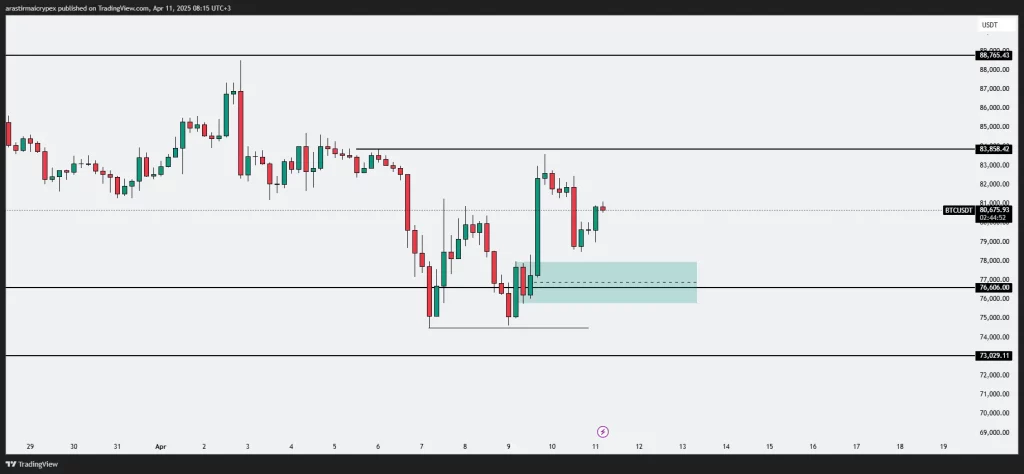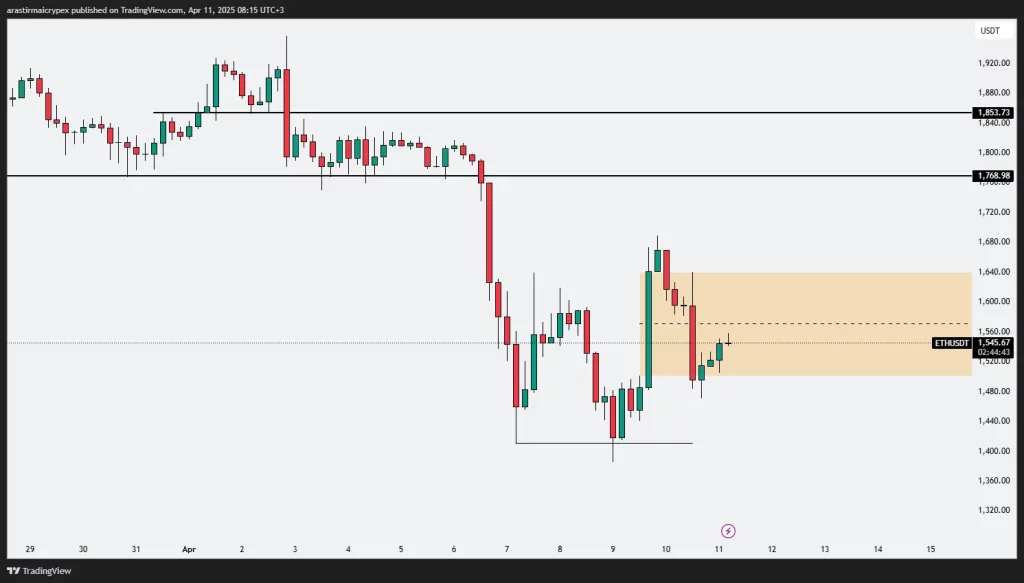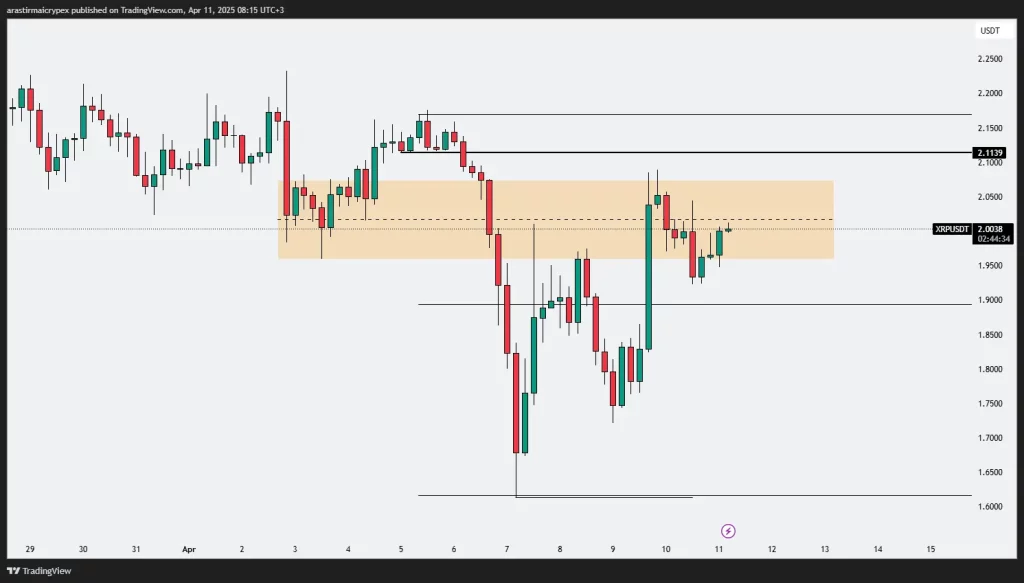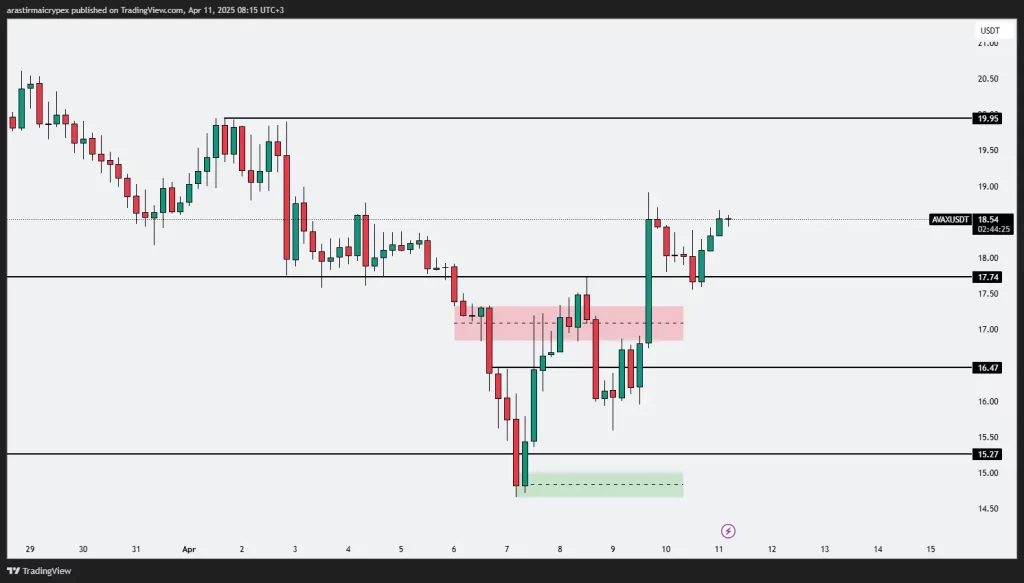Markets Shaken By Tax Uncertainty – Trump Rescinds Controversial Crypto Tax Rule
Markets Shaken By Tax Uncertainty
US President Donald Trump has acknowledged that tariffs will “always be a challenge in the transition process” after markets plunged again amid the global trade war. While tariffs on some products destined for China have been increased to as much as 145%, Trump said the two countries could still reach a “good deal for both sides.” But Beijing is not backing down. China has increased its retaliatory tariffs on American products to 84% and plans to reduce the number of US-made films.
US stock markets fell sharply, with the S&P 500 losing 3.6%, the Dow Jones lost 2.5% and the Nasdaq losing 4.31%. Apple and Amazon shares fell 7% and Warner Bros. Discovery fell 14%. Meanwhile, the European Union has also said it wants to give negotiations a chance by postponing the retaliatory tariffs scheduled to go into effect on April 15 for 90 days. Trump and Commerce Secretary Lutnick argued that the US was getting the “respect it deserves” despite global pressure and that historic agreements were in the pipeline.
Trump Rescinds Controversial Crypto Tax Rule
President Donald Trump has officially rescinded a tax rule that went into effect in the final days of the Biden administration and required crypto brokers to report user data to the IRS. The resolution, introduced by Republicans and supported by some Democrats, was signed into law by Trump after passing Congress. This step was recorded as the first crypto law signed in the US.
The rescinded regulation also saw decentralized finance (DeFi) applications as traditional brokerages, obliging them to collect user data and file tax returns. The crypto industry argued that this rule hindered innovation. DeFi Education Fund evaluated Trump’s signature as a strong indication that the US is adopting a more rational and innovative stance towards digital assets.
Ripple and SEC Signal Agreement in Case
Ripple Labs and the US Securities and Exchange Commission (SEC) are nearing an agreement in the ongoing lawsuit regarding the sale of XRP tokens. In this high-profile case, which has been ongoing since 2020, the parties filed a joint application to halt the appeal process. Ripple argued that XRP is a currency and therefore outside the jurisdiction of the SEC, while the SEC claimed that XRP was an unregistered security. The parties stated that the agreement was reached in principle, but the approval of the SEC commissioners is required for this agreement to enter into force.
This development is of great importance in terms of the regulatory status of the crypto sector and could set a precedent for other crypto projects. The SEC’s settlement with Ripple has the potential to reduce uncertainty about the legal status of crypto assets.
SEC Drops Securities Lawsuit Against Helium
The U.S. Securities and Exchange Commission (SEC) has dropped a securities violation lawsuit it filed against Nova Labs, the developer of the Helium network, in January 2025. The lawsuit was one of the final moves of former chairman Gary Gensler’s tenure, and was concluded on the same day that Gensler handed over his position to Trump appointee Paul Atkins. The dismissal of the lawsuit “with prejudice” means that the SEC cannot refile the same allegations against Helium. Helium emphasized that its HNT, IOT and MOBILE token distributions and hotspot sales will no longer be considered securities.
The decision marks a significant policy shift by the SEC in its approach to crypto after Trump. With Trump taking office, the SEC also dropped lawsuits against major players such as Coinbase, Kraken, Ripple and Uniswap.
New Hampshire House of Representatives Approves Bitcoin Reserve Bill
The New Hampshire House of Representatives approved HB302, a bill that allows the state treasury to invest up to 5% of public funds in precious metals and digital assets, by a vote of 192 to 179. According to the bill, only digital assets with a market value of over $500 billion will be eligible for investment. According to current data, only Bitcoin meets this requirement.
The state’s investment of approximately $3.6 billion in public funds is equivalent to approximately 2,269 BTC at current prices. Authorized custodians, secure solutions provided by the treasury or exchange-traded products can be used for the safe storage of Bitcoins. The bill will now be voted on in the Senate.
SEC Approves Ethereum ETF Options
The U.S. Securities and Exchange Commission (SEC) has approved options trading for BlackRock’s iShares Ethereum Trust (ETHA) and Fidelity’s Ethereum ETF (FETH). These options, which will be traded on Nasdaq and Cboe, will be offered to the market with an American-style exercise and physical delivery structure.
A position limit of 25,000 contracts was set for both ETFs, a limit that was previously applied to Bitcoin ETFs. The decision is expected to accelerate the diversification of Ethereum-based ETF products and attract more institutional interest in the market.
VanEck Files Avalanche ETF Application
Nasdaq has filed a formal application with the SEC to list VanEck’s spot Avalanche (AVAX) ETF. If the application is accepted, investors will be able to gain indirect exposure to AVAX price movements and earn returns without using a crypto wallet.
The ETF will be managed by VanEck Digital Assets, and all AVAX assets will be held by a secure third-party custodian. This is VanEck’s fourth direct crypto-based ETF application after Bitcoin, Ethereum, and Solana ETFs. Grayscale is also known to have applied for a similar AVAX ETF on Nasdaq. Despite AVAX losing 56% in 2025, the ETF interest is drawing attention.
New Guidance for Crypto Asset Registration and Reporting from the SEC
The U.S. Securities and Exchange Commission (SEC) published new guidance on the IPO and registration processes of crypto assets on April 10. The guidance explains how companies should provide information about their operating structures, token design, governance model, technical infrastructure, and financial reporting. The SEC expects firms to ensure consistency between promotional materials and official documents and to convey technical details in plain language.
The SEC also requires that critical information such as the token’s intended use, voting rights, profit sharing, supply structure, smart contract codes, lockup periods and transfer fees be clearly disclosed. While the guidance does not contain any legal obligations, it does provide a clear roadmap for firms looking to go public with an IPO or crypto-based products, and reflects the regulator’s growing interest in the crypto sector.
Pakistan’s Bitcoin Mining Move
Pakistan’s newly established Crypto Council aims to use the country’s excess electricity for Bitcoin mining and artificial intelligence data centers. Bilal bin Saqib, the council’s CEO and also an advisor to the finance minister, said they have met with many mining companies in this area. The project will both utilize surplus energy and aim to attract investment in the blockchain field.
Pakistan, which is following global developments that have gained momentum with Donald Trump’s pro-crypto approach in the USA, wants to turn this strategy into a local opportunity. Although regulations in the country have not yet been clarified, Pakistan is currently among the top 10 countries in the world that adopt the most crypto.
Arizona Provides Legal Assurance for Bitcoin Mining at Home
Arizona has passed HB 2342, a bill that protects individuals from mining Bitcoin and running blockchain nodes at home from city or county-level restrictions. This bill defines the use of “computing power” as a statewide matter, limiting the regulatory authority of local governments in this area. The bill also covers artificial intelligence, cloud computing and scientific calculations done from home.
With this move, Arizona stands out as one of the states most open to crypto. Last month, SB 1373 and SB 1025, bills that aim to create digital asset reserves in state treasuries, were also advanced. These bills would use seized crypto assets in the reserves and invest up to 10% of treasuries or pension funds in Bitcoin.
Native Connection with Ethereum from Cosmos
Cosmos has launched a new layer called “Eureka” that brings Ethereum integration to its inter-blockchain communication protocol IBC. With this update, IBC is no longer limited to the Cosmos ecosystem, but is becoming a universal interoperability protocol.
With Eureka, developers will be able to build multi-chain applications without the need for additional infrastructure and without fragmentation between the Ethereum and Cosmos ecosystems. This will allow applications to run across different chains without interrupting liquidity and user experience. Early use cases include moving Babylon’s Bitcoin staking tokens from Ethereum to Cosmos and trading Elys’ Ethereum assets.
———————————————————————————————
BITCOIN (BTC)
BTC is trading at $80,590 as of the morning hours, gaining 1.22%. It rose to 81,000 with strong purchases from the 73,029 support. During this process, the 76,606 level became an important support. The price is currently trading at 80,675 levels, which acts as a short-term resistance. If the price holds above this area, the 83,858 level can be tested again. Otherwise, a possible pullback to the 76,600 – 77,000 band could create a buying opportunity again. The overall structure maintains upward momentum.

ETHEREUM (ETH)
ETH is priced at $ 1543 with a 1.38% loss in value as of the morning hours. With the reaction it received from the 1.380 level, it performed a rally up to the 1.640 level, but retreated with the resistance formed in this region. The price, which is currently consolidated between the 1.520 – 1.620 band, is looking for direction in this range. If closings above 1.620 come, the 1.768 and 1.853 levels can be watched as the next resistances. In the opposite scenario, persistence below 1.480 may cause declines to accelerate.

RIPPLE (XRP)
XRP is trading at $ 2.00 levels with a 1.51% gain as of the morning hours. With the rise it started from the 1.64 level, it entered the 1.95 – 2.05 band, which is an important supply region. This region has a strong structure as it has worked as both support and resistance in the past. The price is currently trading at the midpoint of this liquidity band. A rejection test or sign of weakness in this area may cause selling pressure to come to the fore again. In case of an upward break, the 2.11 resistance should be followed. Below, the 1.90 and 1.75 levels stand out as support.

AVALANCHE (AVAX)
AVAX is trading at $ 18.48 as of the morning hours with a 0.93% loss in value. It started to rise with the reaction it received from the 15.27 support level and managed to stay above the 17.74 intermediate resistance. After the volume break of this level, the price rose to 18.54 levels. For now, the 17.74 level may work as support. As long as this area is protected, the price may move towards the main resistance area at 19.95. Below, 16.47 and 15.27 levels should be followed as support.

SOLANA (SOL)
SOL is traded at $ 115 levels with a 2.51% gain as of the morning hours. With the upward movement it started from the level of 95.00, it displayed a strong recovery and advanced to the level of 115. During this rise, the levels of 110.24 and 112.00 were exceeded and these areas have now become support. As of now, the price is at the level of 115.39 and the level of 124.00 should be followed as resistance in the short term. This resistance should be watched carefully as it was previously an area where the price had a hard sell. If it can be sustained above 124.00, it is possible for the price to move towards the upper supply area of 130 – 136. Otherwise, the possibility of a retest of the 112.00 level should not be ignored. Below this level, 110.24 stands out as a second support point.
